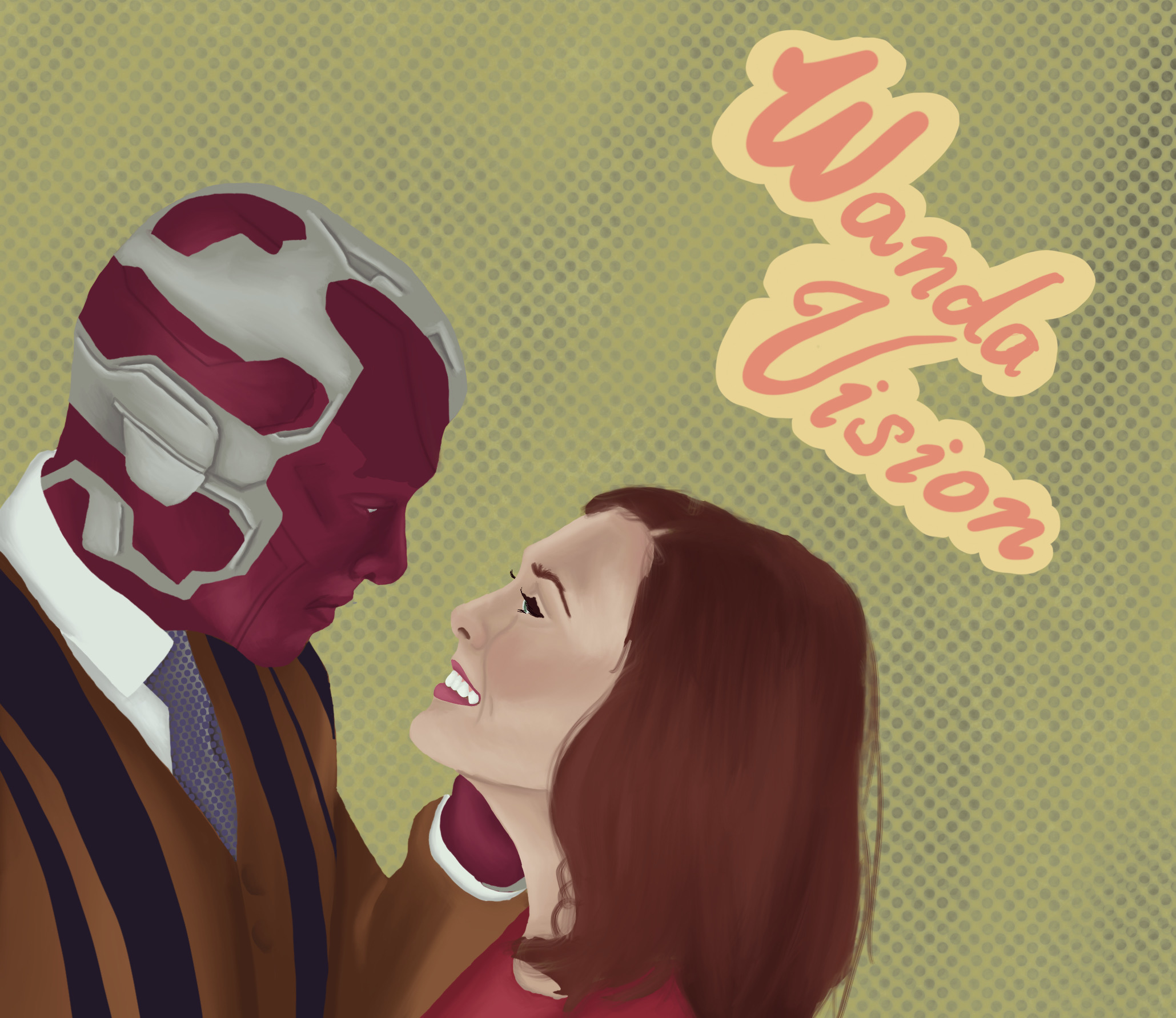
Phase Three of the Marvel Cinematic Universe ended with the most successful film of all time, “Avengers: Endgame.” With Thanos Gone , Phase Four has finally arrived with the television show “WandaVision” on Disney Plus.
The show is centered around Wanda Maximoff and Vision, whose powers were arguably misused in Phase Three. Phase Four, starting with Wanda, is a promising move from Marvel since Wanda Maximoff (a.k.a The Scarlet Witch) is one of the most powerful characters within the universe, playing a significant role in the comics.
The first four episodes are now on Disney Plus, and many viewers are unhappy. Its sitcom-based thematic approach and slow-burn storytelling may turn audiences away too soon. But this strategy works for the way that the show is going to be told.
Producer Kevin Feige incorporated sitcoms such as “I Love Lucy” and “Bewitched” as inspiration as a strategic plan to unveil one of Wanda’s major power sets.
Wanda is known for her power to warp reality to her will, which explains why Vision is alive in this sitcom world even though he died in “Avengers: Infinity War.”
Through each episode of the series, we start to notice that Wanda has lost her sanity after Vision’s death, causing her to bend reality to her desire. This storyline closely resembles the comic book “House of M,” one of the most acclaimed and vital comic books in the Marvel canon.
The show’s beginning relied heavily on the comic book source material and departed from Marvel films’ conventional aspects. The departure created some discourse towards the first half of season one.
Many audience members have trouble following the different hints and easter eggs within each episode. One significant difference between the comics and earlier Marvel films is the agency S.W.O.R.D. The agency has its relations to its well-known predecessor S.H.I.E.L.D. However, S.W.O.R.D is a much lesser-known bureau specializing in intergalactic crime, hinting at how vast Wanda’s powers may be in later episodes. This can be seen explicitly in episode four.
It is terrific to see Feige incorporate so much information from the comics into the storyline of “WandaVision.” Still, I fear that it will distance audience members too early in the show before any real action occurs.
Critics have rallied behind the show as the series progresses. After the debut of the first two episodes, “WandaVision” received an 81% on Rotten Tomatoes. The percentage has recently jumped to a staggering 94%, proving that the show’s later episodes will be worthy of a grand audience.
Although “WandaVision” has taken a completely different creative route from other Marvel pictures, one cannot deny that the show will lead to some of the most anticipated films of Phase Four. We will see the third installment of the “Spiderman” franchise and “Doctor Strange in the Multiverse of Madness.”
Wanda will star in at least one of these films, highlighting that the end of “WandaVision” will uncover what is to come from the Marvel Cinematic Universe.
